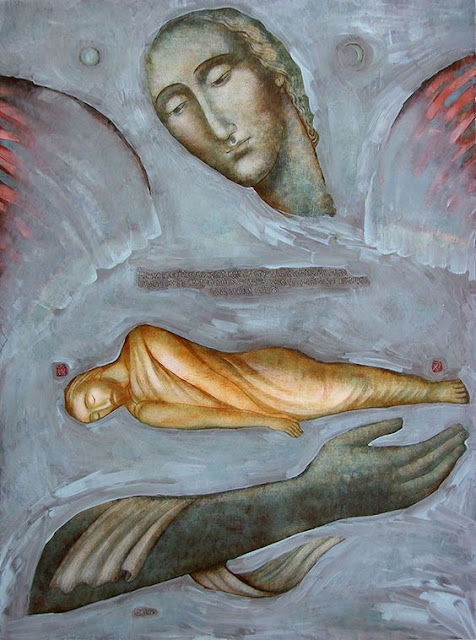Jake Orthwein recently tweeted about the connection between attachment and religion, especially Ideal Parent Figure Protocol Therapy.
Basically, during an Ideal Parent Figure session, a client is asked to imagine having fictional, ideal parents while growing up.
He or she is guided through several scenes, imagining themselves as a child, where these ideal parents can provide all the things that make up a securely attached adult.
These imagined scenes involve the ideal parent providing safety, being attuned to the child, supporting, delighting, and soothing the child.
In this way, a new Internal Working Model is created that the client can bring into his relationships here and now.
By having these positive attachment experiences, new neural pathways are created and a new, secure attachment pattern is established deep in your mind and body.
The following is from Jake Orthwein's twitter:
"There is something religious about attachment and joint attention and I would like to better understand what it is.
Many people have separately noticed that doing the Ideal Parent Figure Protocol bears a striking resemblance to…well…
What’s more, it was directly adapted from Mahamudra deity yoga, in which one visualizes and sometimes becomes a deity who embodies the qualities of awakened awareness
My first experience of doing IPF directly gave rise to the intuition that attachment-related injuries are in fact basic injuries of existential meaning, experienced (in theistic terms) as alienation from god
Per Kegan, existential meaning has its origins in these primordial scenes of initial differentiation from the primary caregiver, in which we express a concrete need to be recognized that will later be abstracted into our lifelong need to be seen, known, recognized
One of the ways we negotiate this transition into being individuated selves is by entering into joint attention with our parents.
These experiences of joint attention temporarily suspend our sense of separate self-consciousness, making them profoundly intimate.
Religions also make use of joint attention, and can be thought of as exercises in orienting attention toward the highest principles (which might also (in a nontheistic idiom) be thought of as attending to the nature of awareness itself) HERE
https://twitter.com/i/status/1636601452964745216
Per Kegan, existential meaning has its origins in these primordial scenes of initial differentiation from the primary caregiver, in which we express a concrete need to be recognized that will later be abstracted into our lifelong need to be seen, known, recognized
One of the ways we negotiate this transition into being individuated selves is by entering into joint attention with our parents.
These experiences of joint attention temporarily suspend our sense of separate self-consciousness, making them profoundly intimate.
Religions also make use of joint attention, and can be thought of as exercises in orienting attention toward the highest principles (which might also (in a nontheistic idiom) be thought of as attending to the nature of awareness itself) HERE
https://twitter.com/i/status/1636601452964745216
Joint attention is also the context in which we learn to point at things, which is where both existential meaning (meaning of life) and semantic meaning (meaning of words) develop.
God (or the ideal parent, or awareness) stands outside us, interpreting attending as significant."
Read more about pointing and meaning HERE
"The claim that the attachment system sits beneath and pervasively influences later developmental achievements lends credence to the theistic claim that the proper stance toward the Ground of Being is one of personal relationship.
It’s why the questions “can I grasp” and “am I recognized” are so existentially central
But it’s also why, when grasping is surrendered, the alienation ends.
It’s why our fundamental alienation from the Ground of Being — our condition of “wrestling with God” — can be characterized in terms of “splitting”













No comments:
Post a Comment